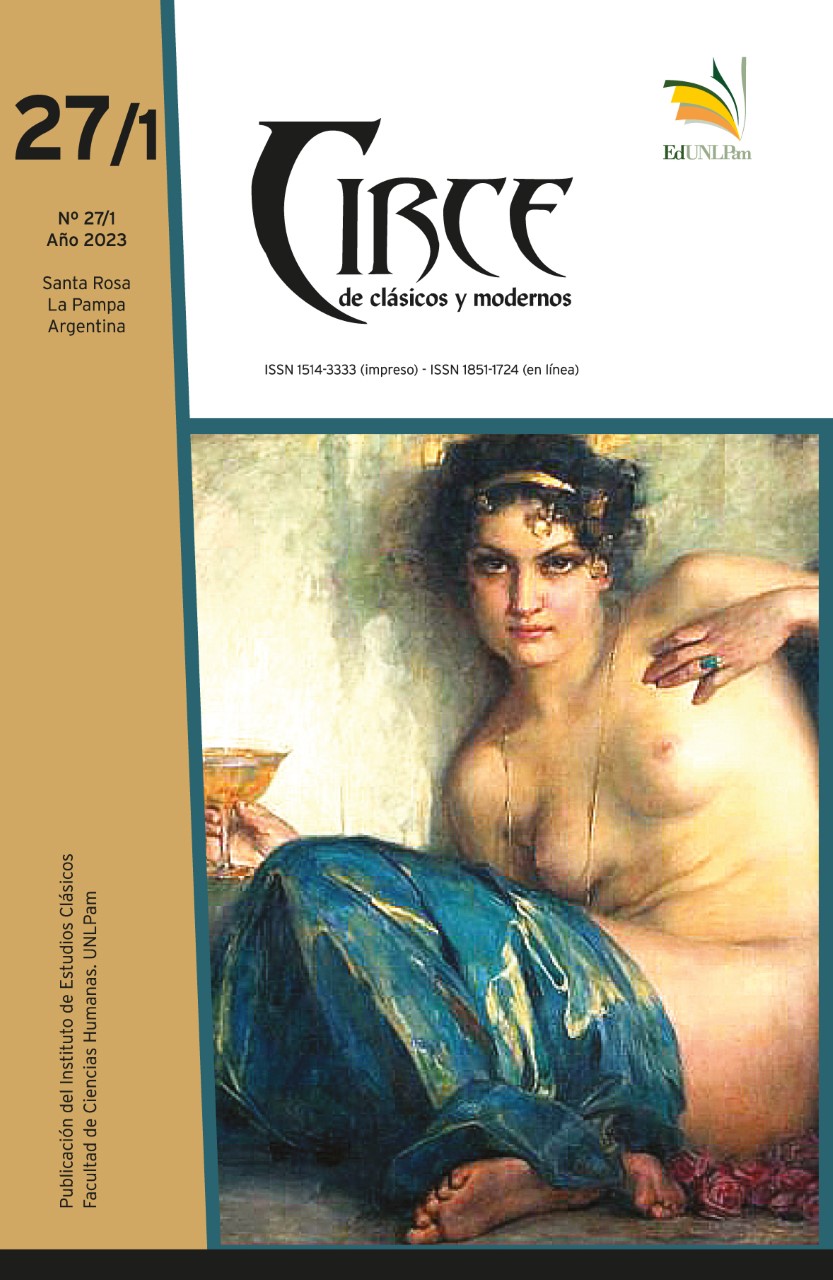Stoic Roots of the Notion of Fantasy and its Reception by Irenaeus of Lyons
Keywords:
St. Irenaeus, Stoics, Fantasy, Image, IllusionAbstract
Among the lessons drawn by Irenaeus from the third temptation of Jesus in the desert (Adv. Haer. 5. 22. 2), the deceitful nature of the senses and the need not to be surprised by riches, by worldly glory and by present phantasy (praesenti phantasia) stand out. The Greek term φαντασία, which has its Latin equivalent in imaginatio, had been widely analyzed in Stoic Logic, before undergoing certain changes over time that confined it to the field of Psychology. Linked to assent (συνκατάθεσις) and appetitus, it drags the wise man into error. The novelty of St. Irenaeus consists in giving fantasy a religious nuance, that of the illusory aspect of the sensible world which engenders deceptive images in those who contemplate it.
Downloads
Downloads
Published
Issue
Section
License
Los autores que tengan publicaciones con esta revista, aceptan los términos siguientes referidos a los derechos de autor/a:
1. Los autores/as conservarán sus derechos de autor y garantizarán a la revista el derecho de primera publicación de su obra, el cuál estará simultáneamente sujeto a la Licencia de reconocimiento de Licencia Creative Commons Atribución-NoComercial-CompartirIgual 4.0 Internacional (http://creativecommons.org/licenses/by-nc-sa/4.0/). que permite a terceros compartir la obra siempre que se indique su autor y su primera publicación esta revista. El autor es el titular del copyright.
2. Los autores/as podrán adoptar otros acuerdos de licencia no exclusiva de distribución de la versión de la obra publicada (postprint) siempre que se indique la publicación inicial en esta revista. La cesión de derechos no exclusivos implica también la autorización por parte de los autores para que el trabajo sea depositado en el repositorio institucional y difundido a través de las bases de datos que el editor considere adecuadas para su indización, con miras a incrementar la visibilidad de la publicación y de sus autores.
3. Se permite y recomienda a los autores/as difundir su obra a través de Internet antes y durante el proceso de envío, lo cual puede producir intercambios interesantes y aumentar las citas de la obra publicada.







.jpg)









2.png)



